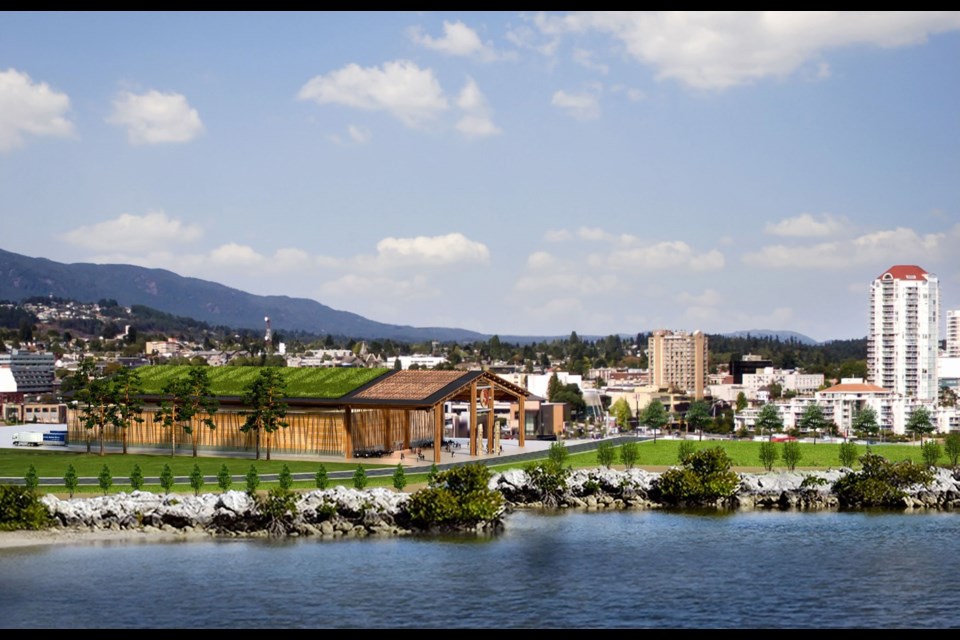Nanaimo voters are being asked to approve $80 million in borrowing to build an events centre, with city hall vowing the plan will not lead to higher property taxes.
The proposed centre is the smaller and less-costly of options presented to council by its consultant. It would have up to 7,100 seats for events such as concerts, and 5,700 seats for hockey.
Under the borrowing plan, $69.8 million would be spent to build the centre, and $9.89 million would go toward cleaning up the city-owned waterfront location, and moving and upgrading utilities. The 1 Port Dr. site is on the south side of Nanaimo’s downtown core. Much of it is fill and it has a history of mining and industrial use. No buildings are on the site.
The referendum on borrowing is on March 11.
A city staff report said the $5.4 million that would be needed annually to service the debt would come from current revenue sources. Nanaimo Coun. Jerry Hong noted that the report said this strategy would avoid any property tax increase.
Nanaimo collects $7 million annually through property taxes to use for general capital projects, the staff report said. The plan is to take $2 million of that for debt servicing.
The city’s strategic infrastructure reserve fund and hotel tax of one per cent would be among other funding sources for the debt, the report said. “No projects will be defunded and the city will continue to be able to respond to emerging issues in the future,” the report said.
The centre’s annual operating costs would be fully funded by the facility through such routes as rentals, suites, tickets, concessions and catering, advertising, naming rights, ice rental and luxury seats, it said.
Council held a special meeting Wednesday to present the borrowing bylaw for its first of three readings.
Hong said in an interview that there is no need to spend up to $86.6 million for a larger building with expanded amenity space. The planned arena’s floor size is the same as other arenas.
“We are right in the ballpark of what everyone else is getting,” he said. “We are trying to get the best bang for our buck.”
This is taxpayer money, not a privately funded facility, Hong said.
Nanaimo’s plan hinges on the arrival of a Western Hockey League team, Hong said. The Kootenay Ice, based in Cranbrook, is considered the most likely team to relocate, with the idea it could operate in the Frank Crane arena, with capacity of 2,400, until the new centre opened in fall 2019.
Any agreement with a WHL team is still to be worked out, but Hong wants to see a long term commitment to Nanaimo.
The hotel sector would benefit from a WHL team because it would help fill hotel rooms in the off season, Hong said. As well, it would help provide year-round hospitality jobs.
Building a “sexy project” like the centre would ignite other development, Hong said. There are projects waiting in the wings for municipal infrastructure investment.
The centre’s design has not been finalized, he said. The city has issued a request for a statement of qualifications for architects. It closes Friday.
Nanaimo’s Don Bonner, a member of NoVote2017.com, which is fighting the referendum, said citizens will end up paying more in taxes despite the municipal plan to avoid increases.
The implication is that money that used to go into reserves for city projects will be redirected to the event centre. ‘‘Which means that anything we want to do in future will require a tax increase,” he said.
Bonner slammed the decision to go for the lower-cost events centre option. “We won’t have the recreational and community areas that they were going to build [in other options].” He said he fears the building will mainly be used for hockey, and not attract a substantial number of special events.
“They have actually picked all the worst options available,” he said. The waterfront site would hold what will look like an unattractive “barn” because the less-costly option has been picked. “If you want to put your name on the map, then you’ve got to build the best you can afford,” Bonner said, adding the city is “cheaping out.”



